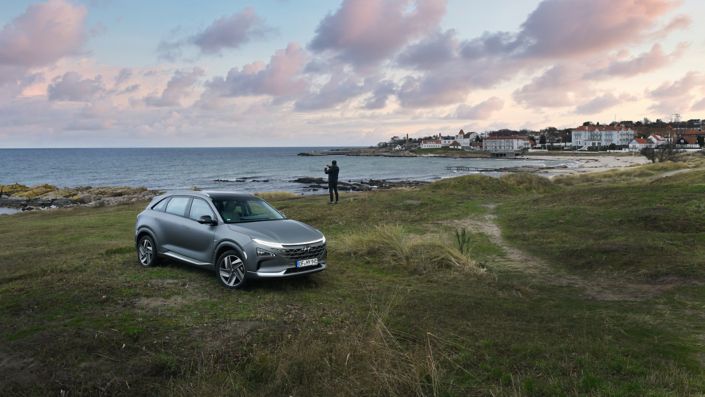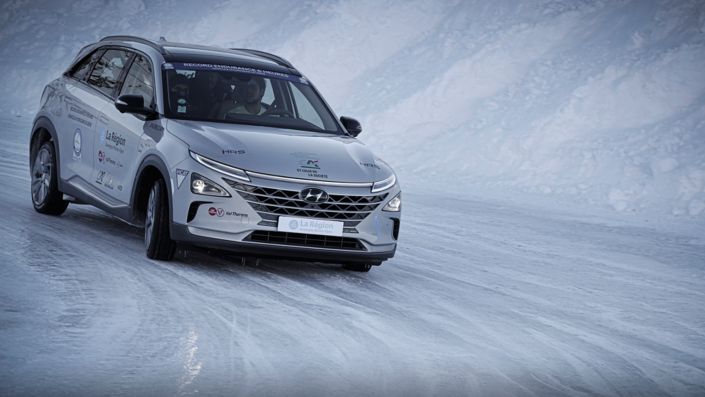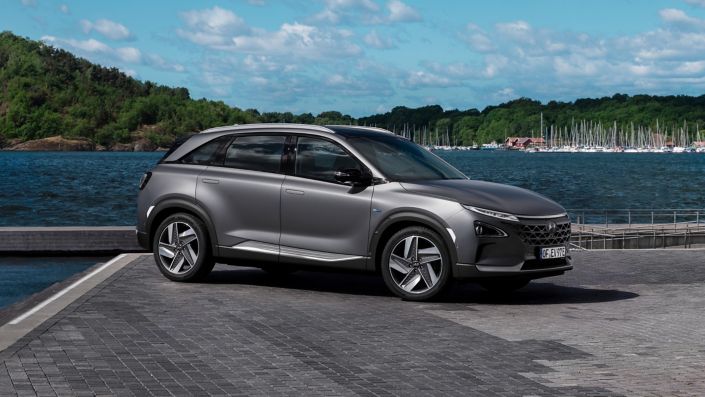- Hyundai's new campaign showcases the technology of the Hyundai NEXO, the first fuel cell electric SUV registered in Spain
- The video shows how the brand's ambassador Mireia Belmonte trains while connected to the vehicle's exhaust system
- The Hyundai NEXO, which only emits water vapour and purifies 99.9% of air, truly portrays Hyundai's commitment to the development of eco-friendly vehicles
In the spot, the Olympic champion faces the challenge of training inside a bubble connected to the exhaust pipe of a Hyundai NEXO, breathing the emissions straight from the vehicle.

Hydrogen consumption combined for the Hyundai NEXO in kg H2/100 km: 0.95; CO2 emissions combined in g/km: 0 (WLTP)
This extreme challenge demonstrates the efficiency of clean, environmentally friendly technology developed for the Hyundai NEXO, which only emits water vapor and purifies the air by 99.9%. The powerful campaign kicks off the Hyundai Eco Road Show, which will last until 10 October. This parallel initiative will raise awareness of the Hyundai ECO product range throughout different parts of Spain.
Mireia Belmonte, the video's star, admits that she found the challenge surprising and did not hesitate to take in Hyundai's breathtaking proposition to show how far hydrogen technology can go.
As a Hyundai brand ambassador, I was invited to take on a challenge where I would breathe in emissions straight from the NEXO’s exhaust. Obviously, this is not an average car, and nor are its emissions. At first I was shocked by this concept, but now I can say that it is one of the most amazing projects I have participated in. Getting involved in this process, to show the effects of inhaling straight emissions from a Hyundai NEXO, i.e. water vapor and oxygen, was an incredible challenge that I am proud to have been a part of. Without a doubt, it is vitally important to continue supporting brands such as Hyundai so that they continue to be innovative and create a better future for everyone.
The Hyundai NEXO, the first hydrogen fuel cell vehicle registered in Spain, is the ultimate example of Hyundai's commitment to hydrogen-powered technology for urban mobility. This is because it does not emit contaminating particles and also reduces drivers’ carbon footprints. In order to achieve maximum impact and show off the technology's positive effects, Hyundai collaborated closely with the National Hydrogen Center and the Camde Sports Medical Center in Spain. Together, they offered support to ensuring the filming went safely, as well as providing testimonials for the making-of film.

Hydrogen consumption combined for the Hyundai NEXO in kg H2/100 km: 0.95; CO2 emissions combined in g/km: 0 (WLTP)
While Mireia was exercising, her well-being was under the close, constant supervision of Dr. Vicente de la Varga Salto, director of the Camde Sports Medical Center, and his team. The doctor is a strong supporter of hydrogen power as an excellent alternative to fossil fuels because, in addition to preventing harmful health effects, hydrogen helps to improve air quality:
We inhale different sized solid particles produced by fossil fuel combustion when we breathe. Considering that the particles derived from combustion number in the thousands, the ways in which they damage the human body multiply. The great advantage of hydrogen engines is not only do they give off zero emissions with these particles, but they also absorb air from the contaminated environment, filter and transform it, eventually producing particle-free air, all to generate energy. Thus, a hydrogen-powered vehicle, in addition to being non-contaminating, by not emitting particles, actively decontaminates by filtering the air volume it needs to operate. You can't get any better than that.
This hard-hitting campaign is further proof of how Hyundai stands at the forefront of technological innovation, as well as its commitment into green vehicle research and development. So, while filming, Mónica Sánchez Delgado, head of the Applied Engineering Unit of the National Hydrogen Center in Spain, and someone who considers hydrogen a safe value for future mobility, was present:
Hydrogen will be the only possible alternative for large-scale energy decarbonisation. To date, no other alternative is available that, on its own, will enable us to achieve the ambitious but vital decarbonisation targets that have been set in Europe.
A CNH2 representative considers campaigns such as Hyundai's vital, which show the unique potential hydrogen and, above all, familiarise society at large with this as yet unknown technology.
Actions like the one Hyundai is taking are totally necessary, since we need to give hydrogen visibility and demonstrate that it is a real energy solution. When you talk to the average citizen about hydrogen being used as a car fuel, it seems to be a very distant academic concept or a pipe dream. This is because the right information is not actually being made available. Plus, the word hydrogen causes suspicion because of two of its characteristics: flammability and volatility. It requires proper handling like all fuels, but not more than using gasoline, diesel or natural gas would. Not surprisingly, today it is being given an unprecedented political and commercial momentum around the world, because in the not too distant future it will be a 'necessity'.

Hyundai NEXO: a legacy of Hyundai's commitment to hydrogen power
Hyundai Motor is a global pioneer in hydrogen fuel cell technology development. In 2013, the company launched the world's first commercially available hydrogen-powered vehicle, the ix35 Fuel Cell.
The Hyundai NEXO, which launched in 2018, is the company’s second generation fuel cell electric vehicle FCEV, and features a single-charge driving range of 666 kilometres (WLTP cycle). It emits only clean water vapor and purifies the air while driving, filtering 99.9% of the ultra-fine particles in the process. The fuel cell, electric motor, battery and hydrogen tanks complement each other to power this FCEV. When the hydrogen stored in the tanks passes to the battery, it breaks down into protons and electrons. The electron flow created in the fuel cell provides electricity to power the electric motor, while the protons react with the oxygen molecules in the air generating heat and water, the only emission of the NEXO.
The Hyundai NEXO is a key part of Hyundai's eco-strategy. The company aims to introduce a total of 38 environmentally friendly models worldwide by 2025, accelerating the development of zero-emission driving. With a clean, fluid design, the Hyundai NEXO includes the newest cutting-edge technology and SUV style without sacrificing elegance. Clearly, the Hyundai NEXO creates a bridge to tomorrow's mobility.
Campaign developed in collaboration with Innocean Worldwide Spain










